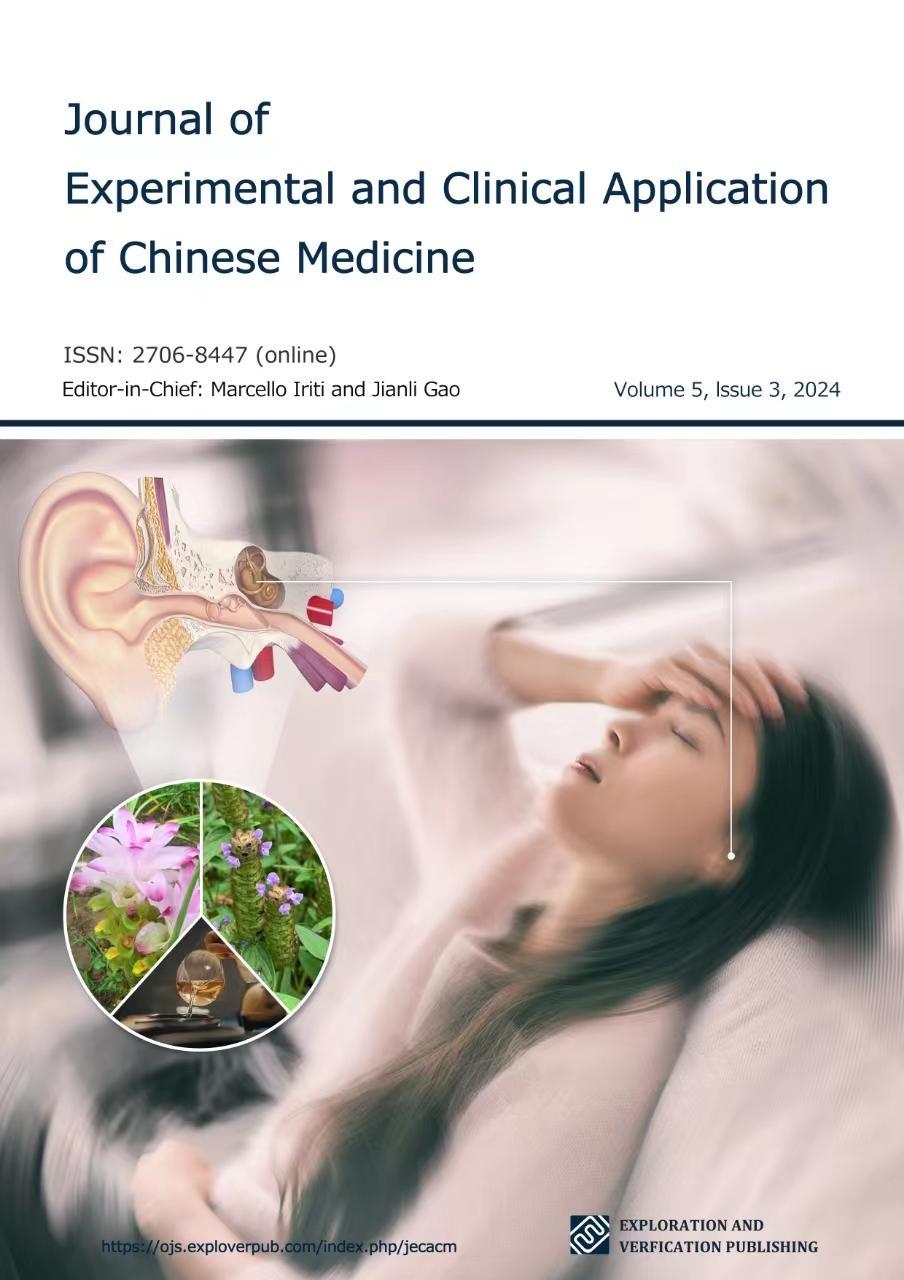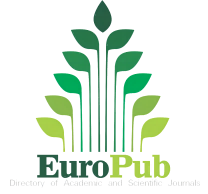Akabane Test—Its Capabilities and Real Application in Traditional and Modern Medicine
DOI:
https://doi.org/10.62767/jecacm503.3747Keywords:
thermal algometry, Akabane test, effect of drugs and their doses, symmetry and asymmetry in the body, diabetes mellitusAbstract
Background: Currently, for high-quality monitoring of the body, it is necessary to have many different devices with you and transmit their data to the doctor. It's expensive, complicated and ineffective. To solve this problem, we used the thermoalgometry method in the form of the Akabane test, which gives an integral assessment of the functional activity of the entire organism, including at the level of individual organs and systems, down to biochemistry. Methods: Using this method, we examined several thousand patients with various pathologies over 30 years. This allowed us to draw well-founded and practice-tested conclusions. As a focus group in this article to evaluate the test's performance compared to traditional diagnostic methods, test results were analyzed in more than 700 of our patients with diabetes. Results: Thermoalgometry data have a significant correlation with the main indicators of the body, including a number of biochemical indicators. At the same time, using the test profile, you can diagnose various diseases, and using the test indicators in the dynamics of observation, you can evaluate the biorhythms of individual organs to predict the condition for several days. A system has been developed for assessing the individual effect of drugs on various organs, their effectiveness and side effects, with determination of their optimal dose and time of administration. Conclusion: The thermoalgometry method opens up a new principle and source of obtaining medical information, based on the assessment of symmetry in the body under normal conditions and in various diseases.
References
Fatehi F, Gray LC, Russell AW. A clinimetric study of outpatient diabetes consultations: the potential for telemedicine substitution. Diabetes Technology & Therapeutics 2014; 16(1): 8-14.
Franc S, Borot S, Ronsin O, et al. Telemedicine and type 1 diabetes: is technology per se sufficient to improve glycaemic control? Diabetes & Metabolism 2014; 40(1): 61-66.
Dy P, Morin PC, Weinstock RS. Use of telemedicine to improve glycemic management in a skilled nursing facility: a pilot study. Telemedicine Journal and E-health 2013; 19(8): 643-645.
Akabane K. Method of Hinaishin; Ido-no-Nippon-Sha: Tokyo, Japan, 1962.
Hardy JD, Wolff HG, Goodell H. Pricking pain threshold in different body areas. Proceedings of the Society for Experimental Biology and Medicine Society for Experimental Biology and Medicine 1952; 80(3): 425-427.
Muzhikov VG, Nozdrachev AD, Bogdanov NN. Discrete Thermopuncture Test. Report 1. Reflexology 2005; 4(15): 23-28.
Muzhikov V. Introduction in Energoskopia of Man; Gopher Publishers: Den Bosch, The Netherlands, 2002.
Muzhikov VG. Akabane Test, Theory and Practice of Thermopuncture Diagnostics and Correction. BP International: West Bengal, India, 2022; p. 395.
Li J, Wang Q, Liang H, et al. Biophysical characteristics of meridians and acupoints: a systematic review. Evidence-Based Complementary and Alternative Medicine: eCAM 2012; 2012: 793841.
Ahn AC, Martinsen OG. Electrical characterization of acupuncture points: technical issues and challenges. Journal of Alternative and Complementary Medicine 2007; 13(8): 817-824.
Zhang WB, Tian YY, Li H, et al. A discovery of low hydraulic resistance channel along meridians. Journal of Acupuncture and Meridian Studies 2008; 1(1): 20-28.
Zhang WB, Wang GJ, Fuxe K. Classic and Modern Meridian Studies: A Review of Low Hydraulic Resistance Channels along Meridians and Their Relevance for Therapeutic Effects in Traditional Chinese Medicine. Evidence-Based Complementary and Alternative Medicine: eCAM 2015; 2015: 410979.
de Vernejoul P, Albarède P, Darras JC. Nuclear medicine and acupuncture message transmission. Journal of Nuclear Medicine 1992; 33(3): 409-412.
Zhirmunsky AKV. The third system for body function regulation in humans and animals-the system of active points. The Journal of General Biology 1979; 40(2): 176-187.
Hou TZ, Luan JY, Wang JY, et al. Experimental evidence of a plant meridian system: III. The sound characteristics of phylodendron (Alocasia) and effects of acupuncture on those properties. The American Journal of Chinese Medicine 1994; 22(3-4): 205-214.
Hou TZ, Re ZW, Li MD. Experimental evidence of a plant meridian system: II. The effects of needle acupuncture on the temperature changes of soybean (Glycine max). The American Journal of Chinese Medicine 1994; 22(2): 103-110.
Hou TZ, Li MD. Experimental evidence of a plant meridian system: IV. The effects of acupuncture on growth and metabolism of Phaseolus vulgaris L. beans. The American Journal of Chinese Medicine 1997; 25(2): 135-142.
Del Giudice E, Preparata G, Vitiello G. Water as a free electric dipole laser. Physical Review Letters 1988; 61(9): 1085-1088.
Del Giudice EDS, Milani M, Vitiello G. Spontaneous symmetry breakdown and boson condensation in biology. Physics Letters A 1983; 95: 508-510.
Geesink HJH, Meijer DKF. A novel biophysical quantum algorithm predicts super-conductive properties in animate and inanimate systems. Quantum Biosystems 2019; 10(1): 1-32.
Heng-pa. The Essence of Sa-Ahm’s Acupuncture; Heng-Lim Publisher: Seoul, Korea, 1975.
Hicks A, Hicks J, Mole P. Five Element Constitutional Acupuncture Edinburgh; Churchill Livingstone: London, UK, 2005; pp. 383-384.
Lee I. A study on the basic forms and principles of Sa-Ahm's 5 phase of acupuncture method. The journal of Korean Acupuncture & Moxibustion Society 2007; 1: 19–51.
TY G. Sa-Ahm’s five element acupuncture and its relation to medical prescription. Journal of Korean Oriental Medicine Society 1977; 12: 27–31.
Muzhikov V, Vershinina E, Muzhikov R, et al. Structure of Interchannel and Five Primary Elements Connections According to the Test of Akabane. International Journal of Chinese Medicine 2018; 2(3): 18-29.
Ahn CB, Jang KJ, Yoon HM, et al. A study of the Sa-Ahm Five Element acupuncture theory. Journal of Acupuncture and Meridian Studies 2009; 2(4): 309-312.
Muzhikov V, Vershinina E, Belenky V, et al. Assessing the Links Between Anthropometrics Data and Akabane Test Results. Journal of Acupuncture and Meridian Studies 2018; 11(1): 31-38.
Muzhikov V, Vershinina E, Muzhikov, R. Possibilities of The Akabane Test to Monitor Excess Body Mass Index and Control Its Transformation into Type 2 Diabetes. Biomedical Journal of Scientific & Technical Research 2021; 33(3).
Muzhikov V, Vershinina E, Muzhikov R, et al. Thermopuncture for the Diagnosis, Monitoring, and Treatment of Patients with Type 2 Diabetes. Journal of Acupuncture and Meridian Studies 2018; 11(5): 323-331.
Muzhikov V, Vershinina E, Belenky V, et al. Significant heat sensitivity increase detected in various types of diabetes mellitus patients by Akabane test for use of management of diabetic patients. Acupuncture & Electro-Therapeutics Research 2016; 41(1): 1-19.
Cugini P, DiPalma L. Cosint analysis: a procedure for estimating biological rhythms as integral function by measuring the area under their best-fitting waveform profile. Biological Rhythm Research 1994; 25: 15-36.
Muzhikov V, Vershinina E, Muzhikov R. Possibilities of the Akabane Test and Cosinor Analysis to Predict the Level of Glycemia and the Individual Selection of Drugs and their Doses in the Treatment of Diabetes. Biomedical Journal of Scientific & Technical Research 2020; 29(3): 502-509.
Irizarry-Caro RA, McDaniel MM, Overcast GR, et al. TLR signaling adapter BCAP regulates inflammatory to reparatory macrophage transition by promoting histone lactylation. Proceedings of the National Academy of Sciences of the United States of America 2020; 117(48): 30628-30638.
Muzhikov V. Method for Determining Blood Indexes and Device for it Embodying. German Patent 199 83 992, European Patent and Trademark Attorneys, N12, 2002.
Muzhikov V, Vershinina E, Muzhikov R, et al. The Method of Individual Assessment of the Action of Insulin and Its Adequate Dose in Diabetes Mellitus. World Journal of Pharmaceutical Research 2019; 8(7): 176-205.
Muzhikov V, Vershinina E, Muzhikov R. Principles of Individual Quantitative Assessment of the Effect of Drugs in Diabetes According to the Akabane Test. International Journal of Pharmacognosy & Chinese Medicine 2021; 5(1): 213.
Muzhikov V. Method for individual selection of a hypoglycemic drug and its dose in diabetes. Patent RU N 2764354, Priority, 2021.
Muzhikov V. Express system for individual monitoring of the action of drugs based on an assessment of the violation of symmetry in the body. 10th Edition of International Conference on World Pharmaceutical Sciences & Drug Delivery: London, UK, 26-27 August 2021.
World Health Organization IDF. Diabetes Atlas, 5th ed.; Unwin N, Whiting D, Guariguata L, et al, Eds.; International Diabetes Federation: Brussels, Belgium, 2011.
Zhang C, Zhang Z. A Survey of Recent Advances in Face Detection; Microsoft Publisher: Redmond, WA, USA, 2010.
Huang C, Ai H, Li Y, et al. High-performance rotation invariant multiview face detection. IEEE Transactions on Pattern Analysis and Machine Intelligence 2007; 29(4): 671-686.
Zhao X, Tang Z, Zhang S. Deep Personality Trait Recognition: A Survey. Frontiers in Psychology; 2022; 13: 839619.
Muzhikov V. A method for quantifying the activity of acupuncture channels, system and module for its implementation. Patent RU N 2746036, 2020.
Muzhikov V, Vershinina E, Belenky V, et al. Comparative Assessment of the Heart's Functioning by Using the Akabane Test and Classical Methods of Instrumental Examination. Journal of Acupuncture and Meridian Studies 2017; 10: 171-179.
Muzhikov V, Muzhikov R. Possibilities of the Akabane Test and ТСМ Principles for Monitoring Patients with Sick Sinus Syndrome. Journal of Integrative Cardiology Open Access 2020; 3(6): 2-9.
Published
Data Availability Statement
The data presented in this study are available on request from the corresponding author.
Issue
Section
License
Copyright (c) 2024 The Author(s)

This work is licensed under a Creative Commons Attribution 4.0 International License.







